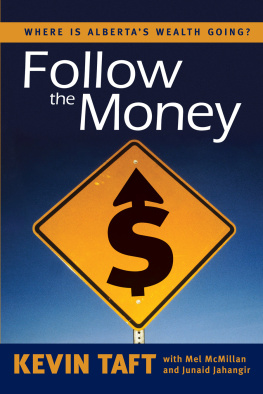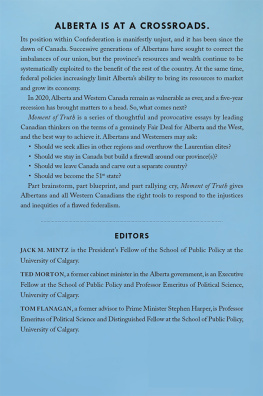This project would not have been possible without the wise counsel of Professor Mel McMillan and the unrelenting number crunching of Junaid Jahangir, Ph.D. Many other people helped out too, some of them immeasurably. To all I offer a hearty thanks. Any errors or mistakes are my responsibility alone. I received no payments to produce this work, and no royalties will be collected.
Afterword: Dominion and Destiny
Fort Garry, Red River Colony, January 20, 1870. For the second day in a row, the crowd of a thousand people had assembled in the field enclosed by the palisades of Fort Garry, not far from the small settlement of Winnipeg. Nothing would deter them, neither the minus 20F temperature, nor the aches from standing five hours on the trampled snow, listening as propositions for the future of western Canada were read aloud, in English and in French. This was their democracy, this was their provisional government, this was their land.
Dominating the platform were two men. Louis Riel, twenty-five years old, recently elected head of the newly declared Provisional Government; and Donald Smith, age forty-nine, Commissioner of the Hudsons Bay Company and delegate for the Government of Canada.
The previous year, the Government of Canada had bought the land that would form the bulk of western Canada from the Hudsons Bay Company. The people who lived on the land had not been consulted, and now they wanted a say. Under Riels leadership, they had formed a provisional government and, with an armed patrol, had turned away at the border the first governor sent from Ottawa. So the federal government sent Smith as an emissary. He had thirty years experience in the fur trade, and a wealth of information from his local network. He was conciliatory, respectful and shrewd.
The provisional government had prepared a list of rights as a condition of accepting the rule of Canada. High on the list: transferring control and ownership of crown land, including mineral rights, from the federal government to the proposed Province of Manitoba.
Smith, a fur trader married [] to the daughter of a fur trader, carried the day, reassuring the assembled citizens that he would take their concerns to Ottawa, as indeed he did. He was sympathetic enough that, on his return to Ottawa, the hardliners in the government of John A. MacDonald regarded his mission as a disappointment. It would be 60 years before the prairie provinces got ownership and control of crown land. In contrast, Donald Smith, his Hudsons Bay Company, and soon the Canadian Pacific Railway, would do very much better.
Two men, different destinies
The lives of Riel and Smith were entwined that winter, but their startlingly different destinies speak to tensions at the core of this country. Riel was elected three times to parliament to represent Manitoba, but never took his seat in Ottawa, for fear of being arrested or murdered in Ontario for his role in the Red River Resistance. Instead, for almost a decade, he lived a life of exile in the United States, mired in poverty, taking odd jobs to support his family, and struggling with his health.
Riel returned to the Canadian west in 1884 at the invitation of the Metis living in Batoche, Northwest Territories (now Saskatchewan). They had never forgotten his leadership during the Red River Resistance, and many of the same issues were boiling again, this time further west. A year later, these tensions broke into violence in the Northwest Rebellion. The rebellion was defeated in May 1885, at the battle of Batoche. Riel turned himself over to the Canadian militia, and he was tried before judge and jury later that year. The jury found him guilty, and the judge passed what would become the most contentious sentence in Canadian history: you be taken to the place appointed for your execution, and there be hanged by the neck till you are dead. Louis Riel was hanged in Regina on November 16, 1885. He was forty-one years old.
Fortune was kinder to Donald Smith. Just nine days before Riel was executed, he drove the ceremonial last spike in the mountains of British Columbia to complete the Canadian Pacific Railway. He had become a leader in the CPR through his investments in railways during the 1870s, first in the U.S. and then in Canada. In 1887, he became president of the Bank of Montreal, a major financial supporter of the CPR, and held the post until 1905.
Smith had started at the bottom of the Hudsons Bay Company in 1838, age eighteen, and worked his way to the top the hard way, spending more than twenty years with the companys operations in Labrador. In the 1860s he was promoted to Montreal, and by the 1880s he was the companys largest shareholder, then served as its governor from 1889 to his death in 1914.
Like Riel, Smith was elected to parliament; unlike Riel, he felt confident enough to actually take his seat. But eventually he abandoned electoral politics to pursue business.
Smiths business interests were strategic. He was drawn to railways because they made it feasible to settle the prairies, and for Donald Smith that was vital. Through a complicated arrangement, the Hudsons Bay Company was granted 4.5 million acres of western land by the Government of Canada as part of the governments purchase of the company. The CPR was granted a staggering 25 million acres to help it finance railway construction. In both cases the grants included mineral rights.
The mineral rights meant that Smiths happy convergence of railways, banking, and land development eventually grew into mining, and then, when gas was discovered in 1891 near Medicine Hat, oil and gas. He rose to international status, served as Canadas High Commissioner in London, and raised a regiment from western Canada Lord Strathconas Horse to serve in the Boer War in 190001. In 1909, at age eighty-eight, Smith became Chairman of the Anglo-Persian Oil Company, the forerunner of British Petroleum and the first company to strike oil in commercial quantities in the Middle East.








